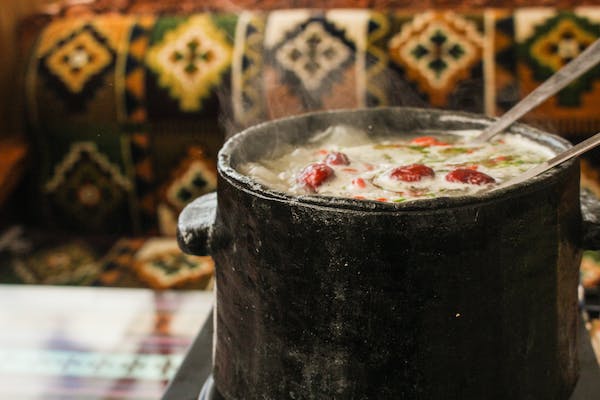 Tibet, a mountainous region nestled in the Himalayan Mountains, is known for its diverse cultural and religious traditions. It is also known for being a vegetarian or healthier diet because of the natural and seasonal vegetables, grains, fruits, dairy, and high-protein foods it offers.
Tibet, a mountainous region nestled in the Himalayan Mountains, is known for its diverse cultural and religious traditions. It is also known for being a vegetarian or healthier diet because of the natural and seasonal vegetables, grains, fruits, dairy, and high-protein foods it offers.
The diet of the Tibetans is largely determined by the climate, geography, and religious beliefs of the area. This is why the cuisine is largely vegetarian and seasonal. For example, in the summer months, food options include fruits, vegetables, grains, nuts, and dairy. In the winter months, people eat dried yak meat, yak cheese, and dried fruits. Meat is a delicacy and mostly present in only special occasions.
In Tibetan cuisine, many dishes are based on the traditional Tibetan bread called tingmos. Tingmos is a type of steam baked dough using rice flour, wheat flour, water, butter, milk, and salt. This traditional Tibetan dish is usually served as a staple food and can often be found in soups, stews, and even dumplings.
Many of the vegetables used in the cuisine of Tibet are unique to the region. These include yams, potatoes, mushrooms, garlic scapes, onions, and radishes. Other traditional foods include barley, buckwheat, soybeans, and millet. Nuts and berries are also a major source of nutrients in the Tibetan diet.
Apart from vegetables and grains, dairy products such as yogurt, soured milk, and cheese are also used in the diet of Tibetans. Dairy is often eaten either as a dip or as an accompaniment to vegetables. Meat and fish rarely make an appearance in the traditional diet as Tibetan Buddhism does not allow the slaughter of animals and meat production is considered to be a wasteful practice.
The Tibetan diet is balanced and includes the basic food groups needed to maintain good health. It is recommended that a variety of whole grains, fruits, vegetables, legumes, nuts, and dairy products are consumed each day. Eating a combination of these foods provides the body with adequate nutrition and energy. In addition to a balanced diet, daily exercise and moderation in alcohol consumption are important for maintaining good health.
In conclusion, the traditional Tibetan diet is full of delicious and nutritious foods. By opting for a vegetarian or a healthier diet, people are able to receive the necessary nutrients for maintaining good health while also supporting the Tibetan way of life. The foods used in the traditional Tibetan diet are in tune with the local environment and are healthy, earth-friendly options.